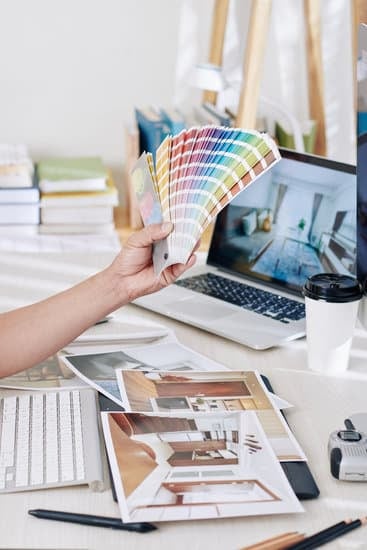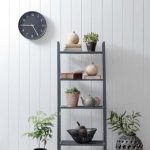Welcome to the world of easy cake decorating for beginners at home. Cake decorating has become a popular hobby among individuals looking to showcase their creativity and add a special touch to homemade cakes. In this article, we will explore the benefits of decorating cakes at home rather than buying premade ones, as well as provide you with essential tools and supplies to get started.
Decorating cakes at home allows you to customize your creations according to your preferences and the occasion. Whether it’s a birthday, anniversary, or just a simple gathering, adding your personal touch can make the cake even more memorable. Not only does it give you the opportunity to express your creativity, but it also offers a sense of satisfaction and accomplishment when you see the final product.
By learning simple cake decorating techniques, you can elevate your cakes from basic to beautiful without requiring advanced skills or expensive equipment. We will guide you through step-by-step instructions for creating smooth frosting, designing borders, and piping intricate designs with ease. Additionally, we’ll provide tips and tricks for achieving professional-looking results that are sure to impress your friends and family.
So if you’re ready to embark on an exciting journey into the world of cake decorating, grab your apron and let’s dive right in. With our easy-to-follow tutorials, helpful tips, and suggestions for adding color, texture, and personalization to your cakes – all on a budget – you’ll be mastering the art of cake decorating in no time. Get ready to impress everyone with your delicious edible masterpieces.
Essential Tools and Supplies for Easy Cake Decorating
When it comes to easy cake decorating for beginners at home, having the right tools and supplies is essential. These tools not only make the process easier but also help you achieve professional-looking results. Here are some must-have tools and supplies that every beginner should have in their cake decorating arsenal:
- Spatulas: Spatulas are necessary for spreading frostings and fillings evenly on cakes. Offset spatulas are especially useful for achieving smooth finishes.
- Piping Bags and Tips: Piping bags allow you to pipe frosting in various designs and patterns onto your cakes. Start with a basic set of piping tips such as round, star, and leaf tips.
- Cake Turntable: A cake turntable is a rotating platform that makes it easier to frost and decorate cakes evenly from all angles.
- Decorating Brushes: Decorating brushes are handy for applying food coloring or edible dust onto fondant or other decorations.
- Rolling Pin: A rolling pin is used to roll out fondant or gum paste to cover cakes or create unique shapes and designs.
- Cake Leveler: This tool helps you level the top of your cakes for even stacking and decorating.
7. Offset Spatula Set 8.Cake Stands
| Tool/Supply | Purpose |
|---|---|
| Spatulas | Spreading frostings and fillings evenly on cakes |
| Piping Bags and Tips | Piping frosting in various designs and patterns onto cakes |
| Cake Turntable | Making it easier to frost and decorate cakes evenly from all angles |
| Decorating Brushes | Applying food coloring or edible dust onto fondant or other decorations |
| Rolling Pin | Rolling out fondant or gum paste to cover cakes or create unique shapes and designs |
| Cake Leveler | Leveling the top of cakes for even stacking and decorating |
| Fondant Smoother | Smoother surfaces of a cake covered in rolled fondant |
These are just a few basic tools and supplies that beginners should start with. As you progress in your cake decorating journey, you may discover additional tools that suit your specific needs and interests. Remember, investing in quality tools will not only make your decorating process smoother but also ensure that you can reuse them for future projects. So gather these essential tools and supplies, and get ready to embark on your easy cake decorating adventure.
Simple Cake Decorating Techniques for Beginners
Decorating a cake may seem overwhelming for beginners, but with the right techniques and a little practice, anyone can create beautiful designs. In this section, we will guide you through some simple cake decorating techniques that are perfect for beginners. Follow these step-by-step instructions and you’ll be on your way to creating professional-looking cakes in no time.
Creating Smooth Frosting
- Start by applying a crumb coat to your cake, which is a thin layer of frosting that helps seal in any crumbs.
- Once the crumb coat is set, apply another layer of frosting using an offset spatula or a cake smoother. Hold the spatula at a 45-degree angle and spread the frosting evenly on the sides of the cake while turning the turntable.
- To achieve a smooth finish, dip your spatula or smoother in hot water and run it over the frosting again, starting from the bottom and working your way up.
- For additional smoothness, place your cake in the refrigerator for about 15 minutes to chill before applying any decorations.
Creating Simple Borders
- One easy way to add a border to your cake is by piping buttercream around the edges using a piping bag fitted with a star tip. Hold the bag at a 90-degree angle to the cake and apply gentle pressure as you move along.
- Alternatively, you can use fondant strips or ribbons to create borders. Simply measure and cut fondant strips of desired width and attach them to the base or top edge of your cake using edible glue or water.
- Don’t be afraid to experiment with different border designs such as shells, beads or zig-zags. Practice these techniques on parchment paper before attempting them on your cake.
Piping Designs with Ease
- To pipe designs on cakes, fill a piping bag fitted with a desired tip with buttercream or royal icing. Hold the bag at a 45-degree angle to the cake and apply even pressure as you pipe.
- Start with simple designs like dots, stars or rosettes. Practice on a piece of parchment paper until you feel comfortable before piping directly onto your cake.
- If you make a mistake, simply scrape off the design and try again. Remember, practice makes perfect.
These simple techniques are just the beginning of your cake decorating journey. As you gain confidence, feel free to explore more advanced designs and techniques. Don’t forget to have fun and let your creativity shine through.
Decorating with Fondant
Fondant is a popular and versatile medium in cake decorating. It is a smooth, pliable icing that can be molded into various shapes and used to cover cakes for a flawless finish. In this section, we will explore the basics of working with fondant and provide you with a step-by-step tutorial on how to cover a cake with fondant.
Fondant comes in two different forms: rolled fondant and poured fondant. Rolled fondant is more commonly used in cake decorating as it provides a smooth, elegant look. It can be purchased pre-made or made from scratch using ingredients like confectioners’ sugar, gelatin, and water.
To cover a cake with fondant, start by ensuring that your cake is completely cooled and level. Prepare the cake by applying a thin layer of buttercream frosting which acts as a glue to hold the fondant in place.
Next, roll out your fondant on a clean, lightly dusted surface using a rolling pin. Aim for an even thickness of about 1/8 inch. Make sure to roll the fondant larger than the dimensions of your cake to allow for proper coverage.
Gently lift the rolled fondant using a rolling pin or your hands and drape it over the cake. Smooth out any air bubbles or creases using your hands or a fondant smoother tool. Trim off any excess fondant using a sharp knife or pizza cutter.
Table: Tips for Working with Fondant
| Tips | Description |
|---|---|
| Knead the Fondant | Before rolling out your fondant, knead it until it becomes soft and pliable. |
| Dust with Cornstarch or Powdered Sugar | When rolling out fondant, use cornstarch or powdered sugar to prevent sticking. |
| Smooth the Edges | To create clean edges, gently smooth the fondant against the sides of the cake using your hands or a fondant smoother tool. |
| Decorate Immediately | Fondant tends to dry out quickly, so work efficiently and decorate with any additional fondant shapes or designs while it is still pliable. |
Now that you have successfully covered your cake with fondant, you can further enhance its appearance by adding decorations such as cut-out shapes, flowers, or embossed patterns. Fondant can be molded and shaped into almost anything you desire. With practice and creativity, you will be able to create stunning designs that will impress your friends and family.
Remember, working with fondant may take some time and patience to master. Don’t be discouraged if your first attempts are not perfect. Keep practicing and experimenting with different techniques and designs. Soon enough, you will gain confidence in working with fondant and be able to create beautiful and professional-looking cakes at home.
Adding Color and Texture
Adding color and texture to your cake decorations is a fun and creative way to make your cakes stand out. There are various techniques you can use to add vibrant colors and interesting textures that will wow your family and friends. In this section, we will explore different ideas for adding color and texture to your easy cake decorations.
One simple yet effective way to add color is by using colored frostings. You can easily find food coloring gels or powders at your local grocery store or baking supply shop. Start with a small amount of gel or powder, as a little goes a long way. Gradually add more until you achieve the desired shade. Remember that different types of frosting may require different amounts of coloring, so be sure to follow the instructions on the packaging.
Another option for adding color is by using edible sprinkles or glitter. Sprinkles come in various shapes, sizes, and colors, allowing you to get creative with your designs. Whether you’re going for a subtle touch of sparkle or a bold burst of color, sprinkles can instantly elevate your cake decorations. Edible glitter is also a popular choice for adding shimmer and shine to cakes.
In addition to color, texture can play an important role in creating visually appealing cake decorations. Fondant molds are a great tool for adding intricate details and patterns to your cakes. These molds come in a wide range of designs, such as flowers, leaves, lace patterns, and more. Simply press the fondant into the mold and carefully remove it to reveal the textured design.
Alternatively, you can use stencils to create beautiful textural elements on your cakes. Stencils are typically made from food-grade plastic or paper and feature various patterns such as polka dots, stripes, swirls, or even custom designs. Place the stencil over your cake and use an edible spray or dusting powder to add texture through the openings in the stencil.
By incorporating these creative ideas for adding color and texture, you can take your easy cake decorations to the next level. Remember to have fun and experiment with different techniques and designs. With practice and a dash of creativity, you’ll soon be creating stunning cakes that are not only delicious but visually captivating as well.
Personalizing Your Cake
Writing messages and adding edible images to cakes are fun and creative ways to personalize your baked goods. Whether you want to celebrate a special occasion or add a personal touch to your cake, this section will provide you with the tips and techniques needed to achieve professional-looking results.
One popular method of personalizing cakes is by writing messages using piping techniques. Piping allows you to create beautiful, customized messages on your cake using buttercream frosting or royal icing. To start, fill a piping bag fitted with a round tip with your desired frosting.
Practice your lettering on a piece of parchment paper before moving onto the cake. When ready, apply gentle pressure to the bag and slowly pipe out the letters onto the cake. Take your time and go at a steady pace for neat and legible results.
Another way to personalize cakes is by adding edible images. Edible images are printed designs made from food coloring and sugar that can be transferred onto the cake’s surface. You can either purchase pre-made edible images from specialty stores or make them yourself using an edible printer and special edible ink cartridges.
To apply an edible image, place it carefully onto the frosted or fondant-covered cake, smoothing out any bubbles or wrinkles with gentle pressure from your fingertips. The image will adhere to the cake’s surface, creating a personalized touch.
When it comes to personalizing cakes for special occasions or themed parties, the possibilities are endless. For example, you can use different colors of frosting along with piping techniques to create intricate designs like flowers or swirls that match the party’s theme. Additionally, consider incorporating other decorations like sprinkles, candies, or even small toys that relate to the occasion or theme.
By learning how to write messages using piping techniques and adding edible images, you can easily personalize any cake and make it truly unique for any event or celebration. So let your creativity run wild as you experiment with different design ideas and have fun creating one-of-a-kind cakes that will impress your family and friends.
Cake Decorating on a Budget
Cake decorating is a creative and enjoyable hobby that can be enjoyed by beginners on any budget. While there are many professional tools and decorations available, it’s not necessary to spend a fortune to create beautiful cakes at home. In this section, we will explore some DIY hacks for cake decorating on a budget, allowing beginners to unleash their creativity without breaking the bank.
One money-saving tip for beginners is to use household items as cake decorating tools. For example, instead of purchasing expensive piping bags, you can simply use plastic zip-top bags. By cutting off a small corner of the bag and filling it with icing, you can easily pipe designs onto your cakes. Additionally, instead of buying expensive cake molds, you can repurpose everyday objects such as cookie cutters or even glassware to create different shapes and designs.
Another way to save money while cake decorating is to consider alternatives to expensive decorations. Instead of using edible pearls or fancy sugar flowers, you can create eye-catching designs using basic ingredients such as colorful sprinkles or crushed cookies. With some creativity and resourcefulness, you can transform ordinary items into stunning decorations.
It’s also worth noting that practicing proper portion control when applying frosting and decorations can help stretch your supplies further. By using less frosting or decoration per cake, you can make the most out of what you have and reduce waste.
Troubleshooting Common Cake Decorating Problems
Uneven Frosting
One common issue that beginners might encounter when decorating a cake is uneven frosting. This can happen when the frosting is not spread evenly or smoothly across the surface of the cake. To prevent this, make sure your cake is completely cooled before applying the frosting.
Additionally, it can be helpful to apply a crumb coat first to seal in any loose crumbs and create a smooth base for the final layer of frosting. Using an offset spatula or a cake smoother, gently spread the frosting in an even layer, starting from the center and working your way outwards.
If you still end up with uneven frosting, you can try using a hot knife technique to smooth it out. Simply dip a clean knife in hot water, dry it with a towel, and then gently run it over the surface of the frosting to even it out. Be careful not to press too hard or remove too much frosting in the process.
Air Bubbles
Another common problem that beginners may encounter when decorating cakes is air bubbles trapped under the fondant or buttercream. These air bubbles can create unsightly bulges or wrinkles on the surface of the cake. To prevent this issue, make sure to smooth out any excess air from between the layers of fondant or buttercream as you apply them to the cake.
If you do end up with air bubbles, there are ways to fix them. For fondant-covered cakes, you can use a small pin or needle to gently pierce the bubble and then smooth out the area with your fingertips.
Be careful not to create tears in the fondant while doing this. For buttercream-covered cakes, you can try gently tapping down on any raised areas with a clean finger or using a small offset spatula to smooth out any wrinkles.
Smudged Designs
Sometimes, beginner cake decorators may find that their designs or decorations get smudged or ruined while working on the cake. This can be frustrating, but there are ways to fix and prevent this issue. One common cause of smudging is the use of wet frosting or fondant when adding additional decorations. Make sure that your base layer is completely dry before adding any other elements to avoid smudging.
If a design does get smudged, you can try gently wiping it away with a clean, dry paper towel or using a small brush to blend it back into the frosting. For more intricate designs, you may need to carefully scrape off the smudged area with a knife or spatula and reapply the design.
To prevent smudging in the first place, always handle your cake with clean hands and be mindful of where you place your fingers while decorating. It’s also helpful to work in a cool environment as warmth can sometimes cause buttercream or fondant decorations to soften and become more prone to smudging.
By being aware of these common cake decorating problems and having the knowledge and tools to address them, beginners can overcome any hurdles they encounter while decorating their cakes. Remember that practice makes perfect and don’t be discouraged if your first few attempts aren’t flawless. With time and perseverance, you’ll soon master the art of easy cake decorating at home.
Inspiration and Resources for Easy Cake Decorating
Online Resources, Blogs, and Tutorials
One of the best ways to find inspiration and guidance for easy cake decorating is to explore the wide range of online resources, blogs, and tutorials available. There are numerous websites dedicated to cake decorating that offer step-by-step tutorials, tips, and tricks for beginners. These resources often include detailed instructions accompanied by photos or videos to help you visually understand each technique. Some popular websites include CakeCentral.com, TheCakeBlog.com, and Wilton.com.
In addition to websites, there are also many talented cake decorators who share their knowledge and expertise through blogs or YouTube channels. These creators often provide helpful tips on different techniques, recipes, and troubleshooting common problems. Subscribing or following these blogs and channels can be a great way to stay updated on new trends and ideas in the cake decorating world.
Social Media Platforms for Inspiration and Trends
Social media platforms like Instagram and Pinterest have become treasure troves of inspiration for cake decorators of all skill levels. By following popular hashtags such as #cakedecorating or #cakeinspiration, you can discover an endless stream of stunning cake designs created by professionals and fellow beginners alike. Many cake decorators also share their techniques through tutorial videos on platforms like TikTok or YouTube shorts.
Moreover, you can join specific Facebook groups or participate in online communities dedicated to cake decorating. These groups not only serve as a platform for sharing ideas but also provide a supportive environment where you can ask questions, seek advice, receive feedback on your creations, and connect with other passionate individuals who share your love for cake decorating.
Local Cake Decorating Classes
While online resources are abundant and convenient for learning at your own pace at home, taking a local cake decorating class can provide a hands-on experience that allows you to interact with an instructor and fellow students in real-time. Many community centers, culinary schools, and craft stores offer beginner-friendly cake decorating classes. These classes usually cover various techniques and provide the opportunity to practice under the guidance of an experienced instructor.
Attending a local class can also be a great way to meet other cake decorating enthusiasts in your area and build connections within your community. Additionally, instructors often have valuable tips and tricks that may not be readily available online, helping you refine your skills and gain confidence in your abilities as a cake decorator.
By exploring these inspiration and resource options, beginners can delve deeper into the world of easy cake decorating. Whether it’s through online tutorials, social media platforms, or local classes, there is an abundance of knowledge and inspiration available to help you develop your skills and create beautiful cakes right at home.
Conclusion
In conclusion, this article has provided a comprehensive guide for beginners who are interested in easy cake decorating at home. We have explored the essential tools and supplies needed, as well as step-by-step instructions for various cake decorating techniques. From covering cakes with fondant to adding color, texture, and personalization, we have equipped you with the knowledge and skills to create beautiful and professional-looking cakes.
While the world of cake decorating may seem daunting at first, it is important to remember that practice makes perfect. As a beginner, it is natural to make mistakes along the way. However, don’t be discouraged. Take the time to experiment and try new techniques. The more you practice and hone your skills, the better you will become.
Furthermore, it is important to approach cake decorating with a sense of enjoyment and fun. Don’t be afraid to unleash your creativity and express yourself through your cake decorations. Whether it’s for a special occasion or just for your own pleasure, cake decorating can be a fulfilling hobby that brings joy to both yourself and others.
In summary, with dedication, practice, and a willingness to learn, anyone can become a skilled cake decorator. So gather your tools, let your imagination run wild, and start creating stunning cakes right in the comfort of your own kitchen. Happy decorating.

I’m thrilled to be your companion on this exciting journey through the world of home decor and design. With a passion for turning houses into homes and a keen eye for the finer details, I’m here to help you transform your living spaces into beautiful, functional, and meaningful havens.





